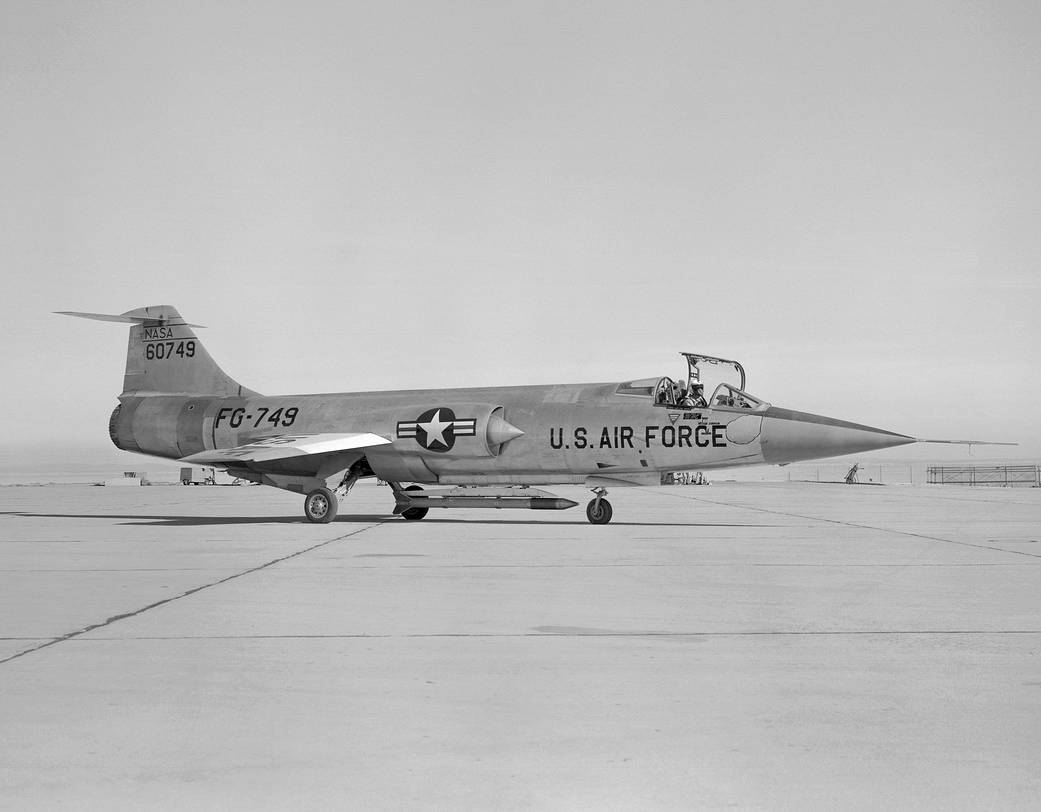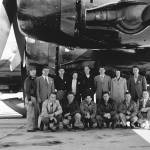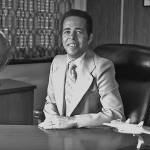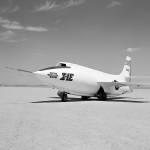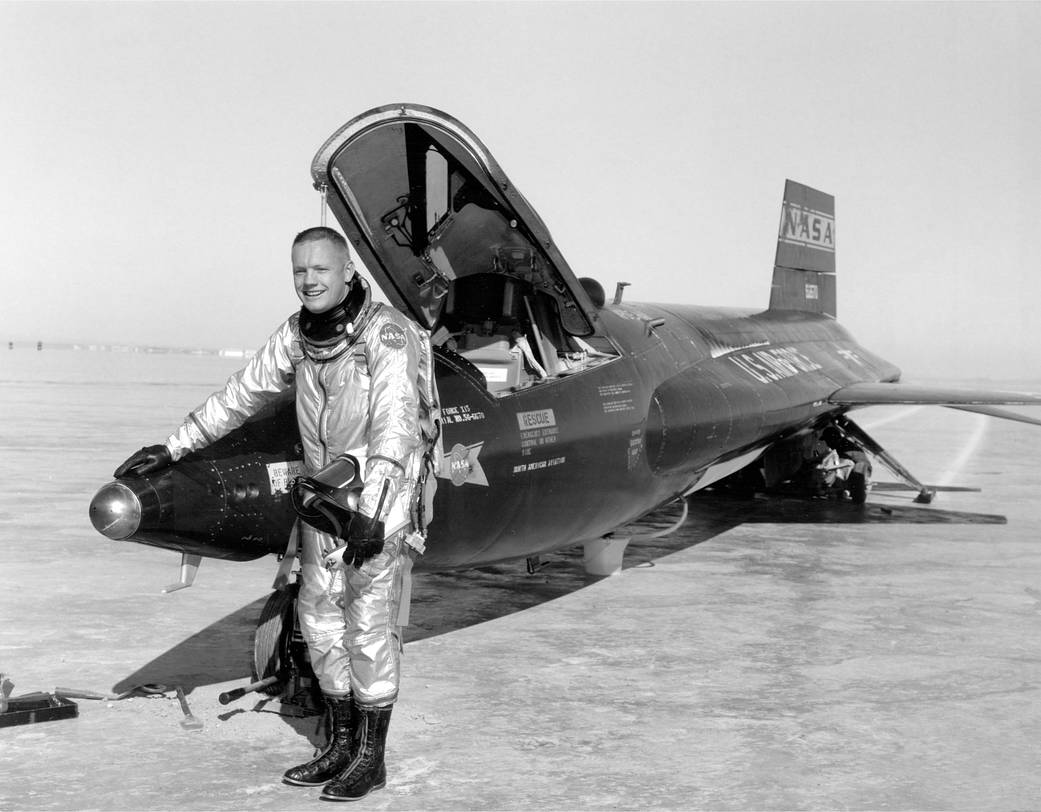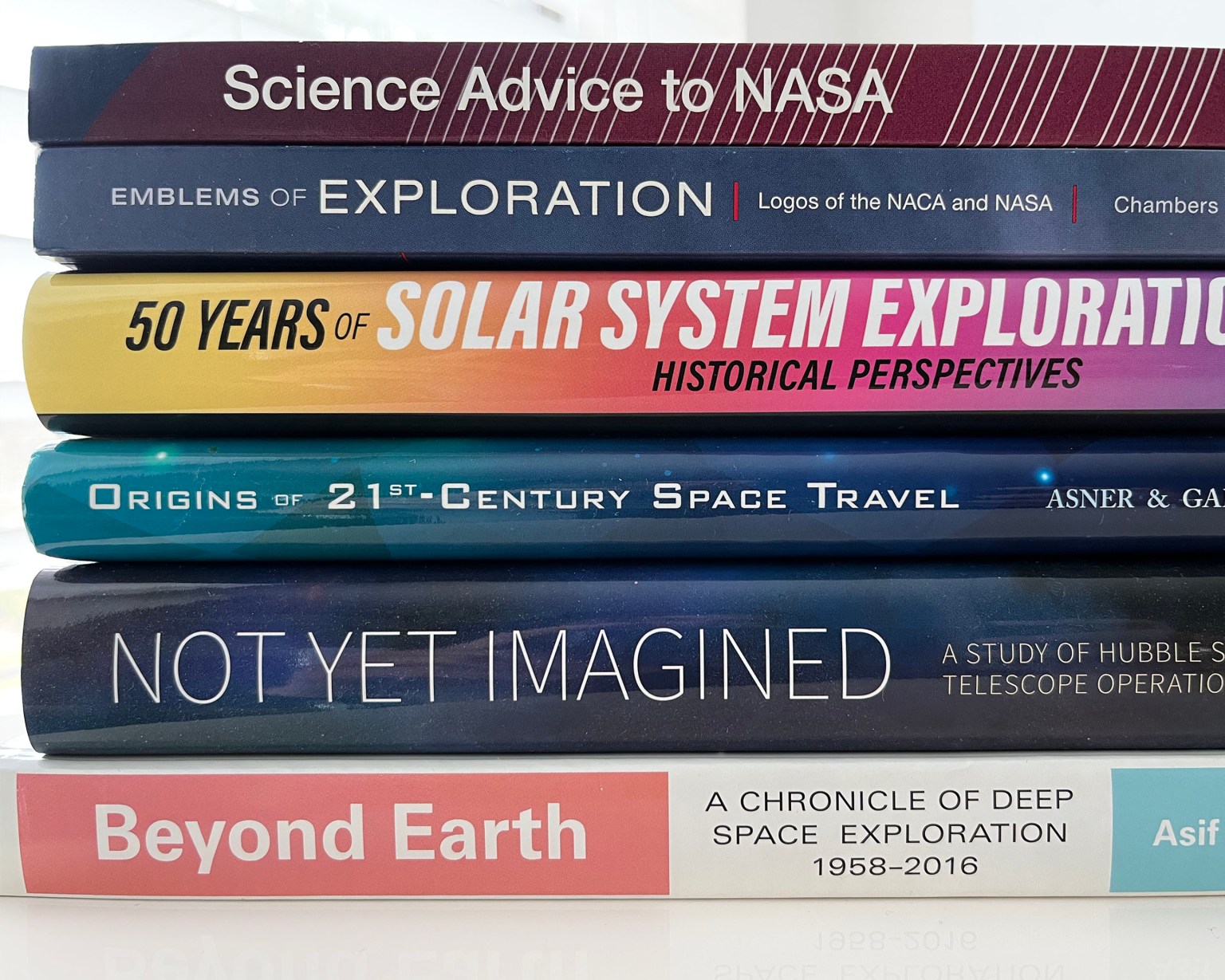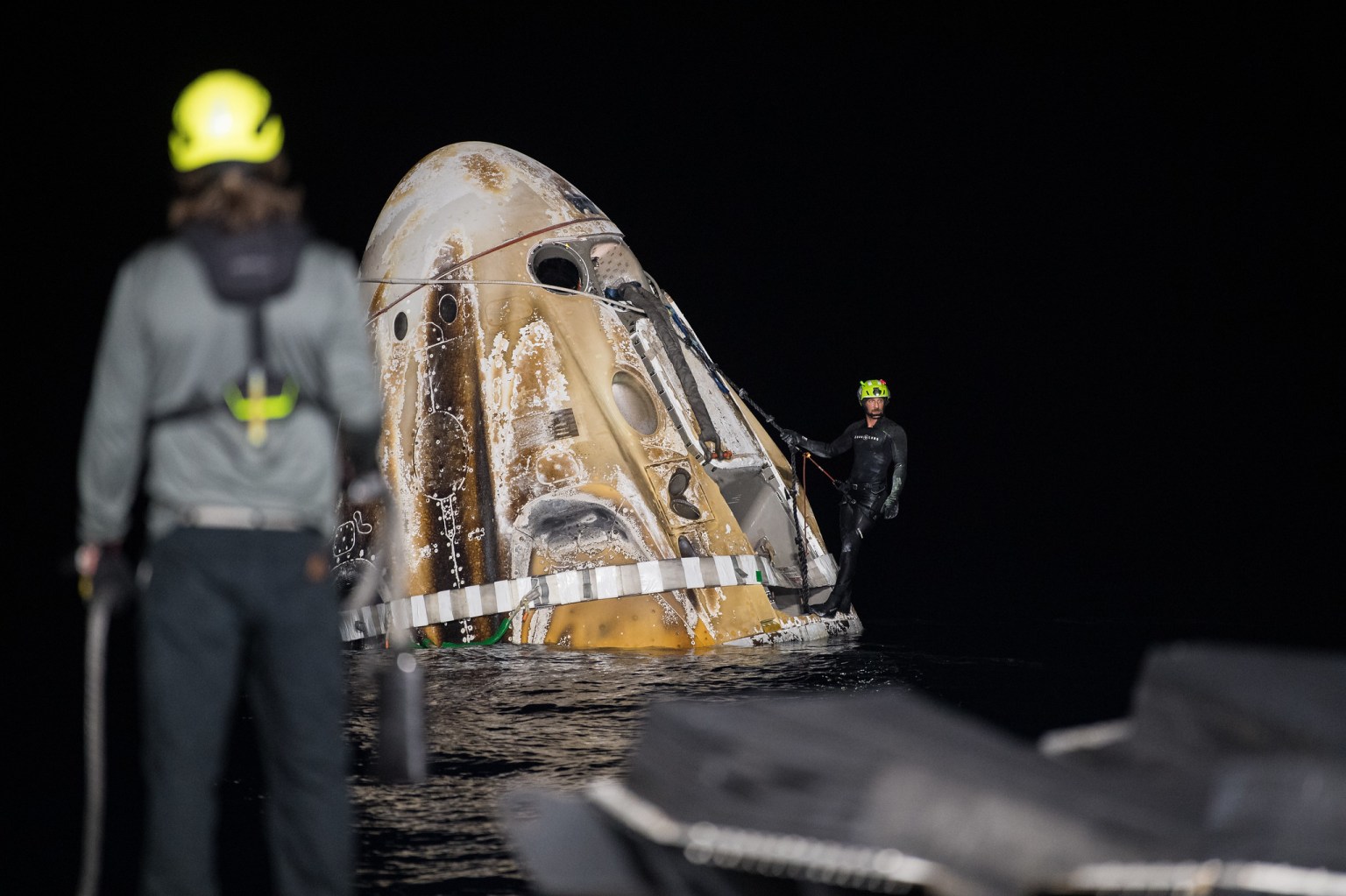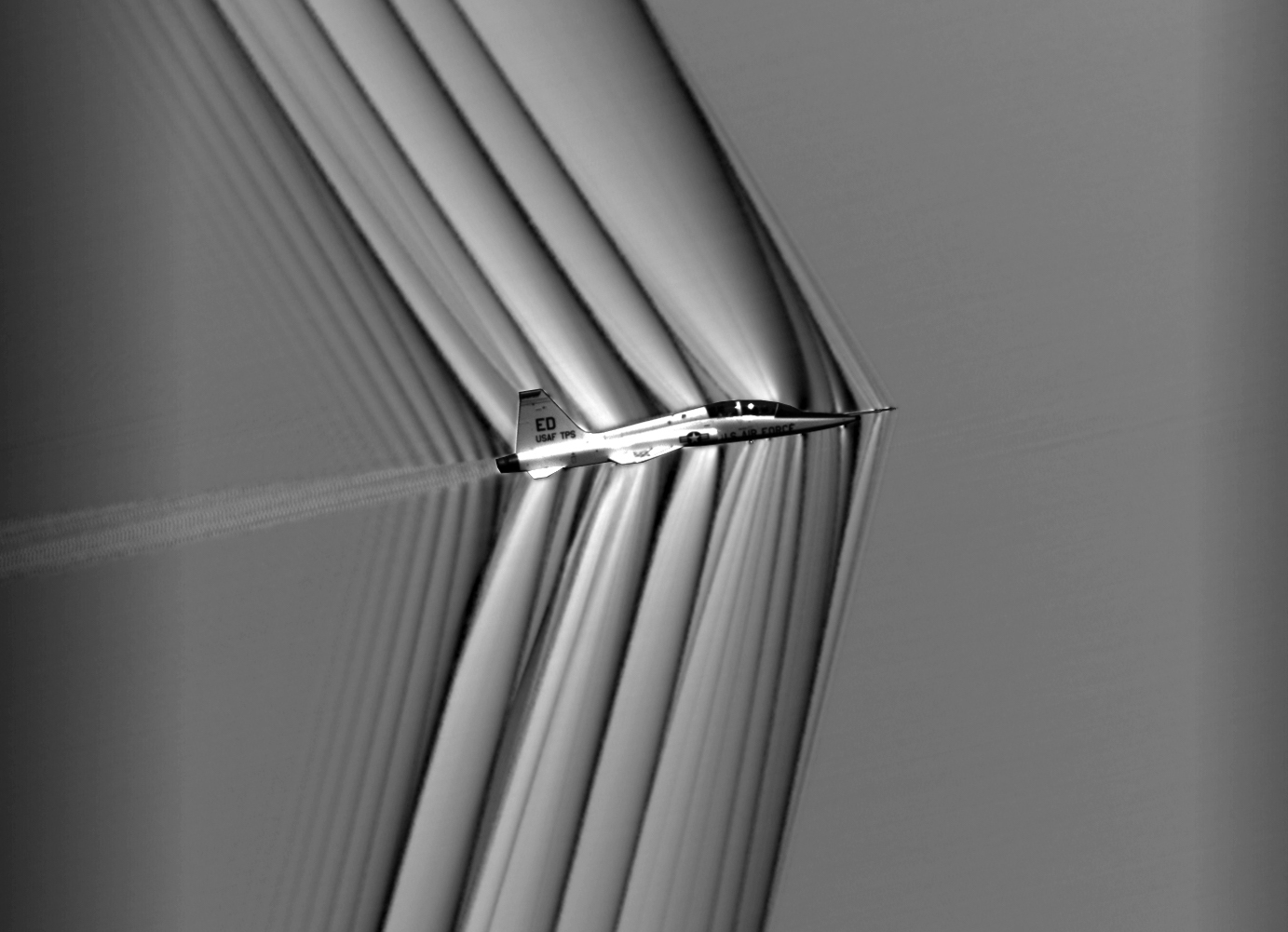Armstrong
Publications
Learn more about flight research at NASA Armstrong Flight Research Center with our e-books and other publications.
E-Books
The following Armstrong e-books are available for viewing and printing.
A History of Suction-Type Laminar-Flow Control with Emphasis on Flight Research
By Albert L. Braslow
As the title suggests, this study by a noted expert describes the long history of laminar-flow-control research with an emphasis on that done by the National Advisory Committee for Aeronautics and NASA.
A New Twist in Flight Research: The F-18 Active Aeroelastic Wing Project
By Peter W. Merlin
This volume in NASA’s Aeronautics Book Series describes the origins and design development of X-53 active aeroelastic wing (AAW) technology, its application to a research aircraft, the flight-test program, and follow-on research and future applications.
Black Magic and Gremlins: Analog Flight Simulations at NASA’s Flight Research Center
By Gene L. Waltman
This history of the Flight Research Center (FRC) Simulation Laboratory (FSL) describes the development of experimental flight-test simulators and the rapid evolution of the computers that made them run.
Breaking the Mishap Chain: Human Factors Lessons Learned from Aerospace Accidents and Incidents in Research, Flight Test, and Development
By Peter W. Merlin, Gregg A. Bendrick and Dwight A. Holland
A collection of case studies of mishaps involving experimental aircraft, aerospace vehicles and spacecraft in which human factors played a significant role.
Computers Take Flight
By James E. Tomayko
This book tells the significant story of the F-8 Digital Fly-By-Wire project, which pioneered an important new technology that paved the way for use of digital flight control on the F-18, F-16, F-117, B-2, F-22 and Boeing 777 as well as other aircraft.
Crash Course: Lessons Learned from Accidents Involving Remotely Piloted and Autonomous Aircraft
By Peter W. Merlin
An investigation of remotely piloted research vehicle (RPRV) and unmanned aircraft system (UAS) mishaps and their causes, consequences, resultant corrective actions and lessons learned.
Green Light for Green Flight: NASA’s Contributions to Environmentally Responsible Aviation
By Peter W. Merlin
NASA’s Environmentally Responsible Aviation (ERA) project began in 2009 to explore and document the feasibility, benefits and technical risks of advanced vehicle concepts and enabling technologies for reducing aviation’s overall impact on the environment. This book reviews the advanced aircraft design concepts, construction technologies and propulsion advancements that were researched by the ERA project.
Flight Research: Problems Encountered and What They Should Teach Us
By Milton O. Thompson
A retrospective of flight research at what became (in 1976) NASA’s Dryden Flight Research Center from its early days to 1974 by NASA X-15 research pilot and chief engineer, Milt Thompson.
Flying Beyond the Stall
By Douglas A. Joyce
The X-31 was unique in the world of experimental or X-airplanes. The first (to date) X-plane that was designed, manufactured and flight tested as an international effort, a joint effort of the United States and Germany. It also was the only X-plane that supported two separate test programs, one run largely by NASA and the other by the U. S. Navy that were conducted years apart with the aircraft in storage between them. The X-31 was the only X-plane to perform at the Paris Air Show.
Hugh L. Dryden’s Career in Aviation and Space
By Michael H. Gorn
This is a biography of Hugh L. Dryden from 1898 to 1976, with emphasis on his career with NACA and NASA.
Ikhana: Unmanned Aircraft System, Western States Fire Missions
By Peter W. Merlin
The story of the Ikhana, a remotely piloted vehicle used by NASA researchers to conduct Earth science research and which became an unexpected flying and imaging helper to emergency workers battling California wildfires.
Mach 3+ NASA/USAF YF-12 Flight Research, 1969-1979
By Peter W. Merlin
A comprehensive history of the first major NASA project involving the Lockheed Blackbirds, airplanes capable of flying more than three times the speed of sound at altitudes exceeding 80,000 feet. Conducted with the U.S. Air Force (USAF) as a partner, the NASA-USAF YF-12 research program lasted 10 years, and produced a wealth of data on materials, structures, loads, heating, aerodynamics and performance for high-speed aircraft.
NASA’s Contributions to Aeronautics, Volume 1
Edited by Richard P. Hallion
This first volume in a two-volume set includes case studies and essays on NACA-NASA research for contributions such as high-speed wing design, the area rule, rotary-wing aerodynamics research, sonic boom mitigation, hypersonic design, computational fluid dynamics, electronic flight control and environmentally friendly aircraft technology.
NASA’s Contributions to Aeronautics, Volume 2
Edited by Richard P. Hallion
The second volume includes case studies and essays on NACA-NASA research for contributions including wind shear and lightning research, flight operations, human factors, wind tunnels, composite structures, general aviation aircraft safety, supersonic cruise aircraft research and atmospheric icing.
NASA’s First A: Aeronautics from 1958–2008
By Robert G. Ferguson
Aeronautics, the first A of the NASA acronym, has always been a part of the National Aeronautics and Space Administration, but against the headline exploits of rocket launches, Moon landings, Space Shuttle missions and Mars rovers, aeronautics is easily lost in the shadows of NASA’s marquee space programs. This relative obscurity belies what has been a remarkably creative, productive and highly effective group of researchers who, at one time, even helped bring about the Space Age and invent a space agency. The list of accomplishments for NASA’s first A is long, and this book goes a modest way toward sketching these developments.
Probing the Sky: Selected NACA Research Airplanes and Their Contributions to Flight
By Curtis Peebles
In the decades since the Wright brothers’ first flights, a body of knowledge and tools, created in an evolutionary process of small steps, had been built up to guide engineers and researchers in developing new aircraft. The early wood-and-fabric biplanes had given way to all-metal monoplanes. Aircraft size, range, and payload had also grown, until the oceans could be spanned in a fraction of the time a ship would take. Speed became the critical factor in both commercial and military operations.
Promise Denied: NASA’s X-34 and the Quest for Cheap, Reusable Access to Space
By Bruce I. Larrimer
Between 1992 and 1996, the American aerospace community vigorously explored the development of a post-Space Shuttle reusable space transportation system for the United States. This book examines the NASA-Orbital Sciences X-34 Technology Testbed Demonstrator, high on any list of the best research aircraft never flown.
Quieting the Boom: The Shaped Sonic Boom Demonstrator and the Quest for Quiet Supersonic Flight
By Lawrence R. Benson
This is the story of the Shaped Sonic Boom Demonstrator, as well as a general history of sonic boom research, emphasizing the people and organizations. The demonstrator culminated four decades of study and research on mitigating the strength of sonic booms. This book follows up on a case study from 2009, “Softening the Sonic Boom: 50 Years of NASA Research.” That relatively short survey was published in NASA’s Contributions to Aeronautics, Volume 1 (NASA SP-2010-570).
Supporting Shuttle: 35+ Years of Excellence at Dryden
By George H. Grimshaw, edited by Peter Merlin
This publication provides an overview of Dryden‘s contributions to the Space Shuttle program, a statistical overview of the vehicle, its missions, and accomplishments including both milestones and trivia.
Sweeping Forward: Developing & Flight Testing the Grumman X-29A Forward Swept Wing Research Aircraft
By Frederick A. Johnsen
The X-29 was an unusual aircraft with a truly unique silhouette. It combined many features that challenged the technologies of its day and represented special problems for the developers and the team of testers responsible for documenting its features and design goals. This book is a look at the “big picture” of what this team accomplished in a relatively fast-paced test program involving the truly unique X-29.
The Eclipse Project
By Tom Tucker
Tucker provides a readable narrative and a number of documents that record an important research effort to expand access to space at NASA’s Dryden Flight Research Center.
The Smell of Kerosene, A Test Pilot’s Odyssey
By Donald L. Mallick with Peter W. Merlin
This book tells the story of a NASA research pilot who logged more than 11,000 flight hours in more than 125 types of aircraft.
The Spoken Word: Recollections of Dryden History The Early Years
Edited by Curtis Peebles
This monograph contains interviews with former employees about the early years of the Dryden Flight Research Center.
The Story of Self-Repairing Flight Control Systems
By James E. Tomayko, edited by Christian Gelzer
Neural-net computer software makes possible self-repairing flight control aircraft systems that can compensate for damage to an aircraft and render it not only flyable, but nearly as controllable as it was before the damage. NASA has played an integral role in the development and airborne testing of these systems, systems which may change the way aircraft are designed, built, tested and maintained.
Touchdown: The Development of Propulsion Controlled Aircraft at NASA Dryden
By Tom Tucker
This monograph tells the story of how a NASA-industry team led by Frank W. Burcham and C. Gordon Fullerton from NASA’s Dryden Flight Research Center developed a way to land an aircraft safely using only engine thrust to control the airplane.
Toward Mach 2: The Douglas D-558 program
Edited by J. D. Hunley
The symposium proceedings on the history of the Douglas D-558 flight research program and provides a selection of documents relating to the swept wing aircraft, the first to exceed Mach 2.
Unconventional, Contrary, and Ugly: The Lunar Landing Research Vehicle
By Gene Matranga, Wayne Ottinger, Calvin Jarvis and Christian Gelzer
This book recounts the conception, development and refinement of a full-flying training simulator to train astronauts for landing on the moon. The result was not only vital for the astronauts (all of whom credited the vehicle for its realistic simulations) but was also the first truly successful fly-by-wire aircraft, albeit with analog computers.
Women in Flight Research at NASA Dryden Flight Research Center from 1946 to 1995
By Sheryll Goecke Powers
This monograph not only provides much information about women involved in (especially early) flight research at what became the Dryden Flight Research Center but also a lot of details about how data was recovered from research flights and about the early history of the center.
X-15: Extending the Frontiers of Flight
By Dennis R. Jenkins
The X-15 was the ultimate “X” vehicle. Built in the 1950s, it became the fastest and highest-flying winged aircraft of its time. Over 199 flights between 1959 and 1968, it collected data about hypersonic and exo-atmospheric flight that was invaluable to aeronautics and to developers of the space shuttle. This e-book describes the genesis of the program, the design and construction of the aircraft, years of research flights and the experiments that flew aboard them.
Publications in Print
The following publications are available through the NASA Armstrong Public Affairs Office.
On the Frontier: Experimental Flight at NASA Dryden
By Richard Hallion and Mike Gorn
This revision to 1984’s “On the Frontier” by Hallion contains new chapters, rare photographs and appendices, including various program flight chronologies. The authors present a thoughtful study of the relationship between the aircraft and research pilots during the second half of the last century. The book is an authoritative history of flight research at Dryden from 1946 to 1981, including chronologies of flights from the X-1 to the Space Shuttle.
More NASA Publications
Hypersonic Revolution
Edited by Richard P. Hallion
Excerpted from this book, published by the Air Force History and Museum Program, is the section dealing with the X-15.
Proceedings of the X-15 First Flight 30th Anniversary Celebration of June 8, 1989
These proceedings include comments by historians, pilots and others with keen insights on the truly historic X-15 program that bridged aeronautics with astronautics during NASA’s first decade.
X-15 Research Results with a Selected Bibliography
By Wendell H. Stillwell
This short study, written about half-way through the highly significant X-15 program, provides much valuable information about the airplane and its flight research from 1959 to 1964.


























